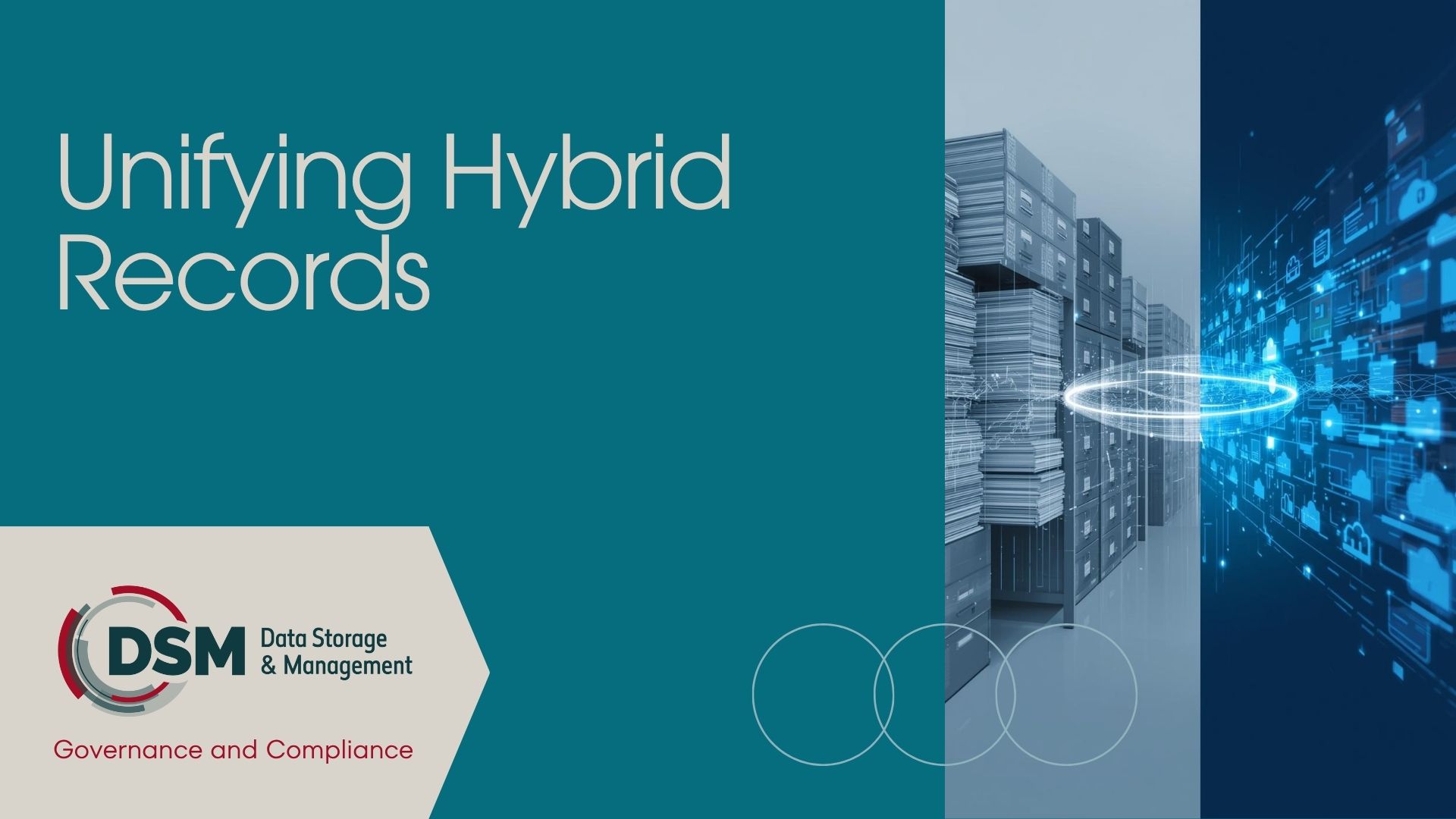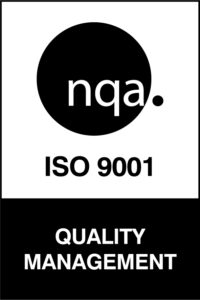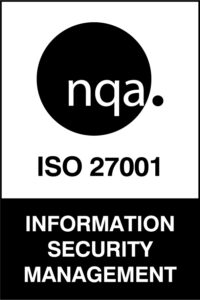Business environments are all regulated, some more than others. Some businesses are fully digital (no paper) but very few. For most, hybrid records management is the reality.
Physical records still exist, often due to legal or regulatory requirements, while digital records continue to grow exponentially. Many organisations are also in the process of digitising archives, creating a complex mix of formats that must be managed consistently.
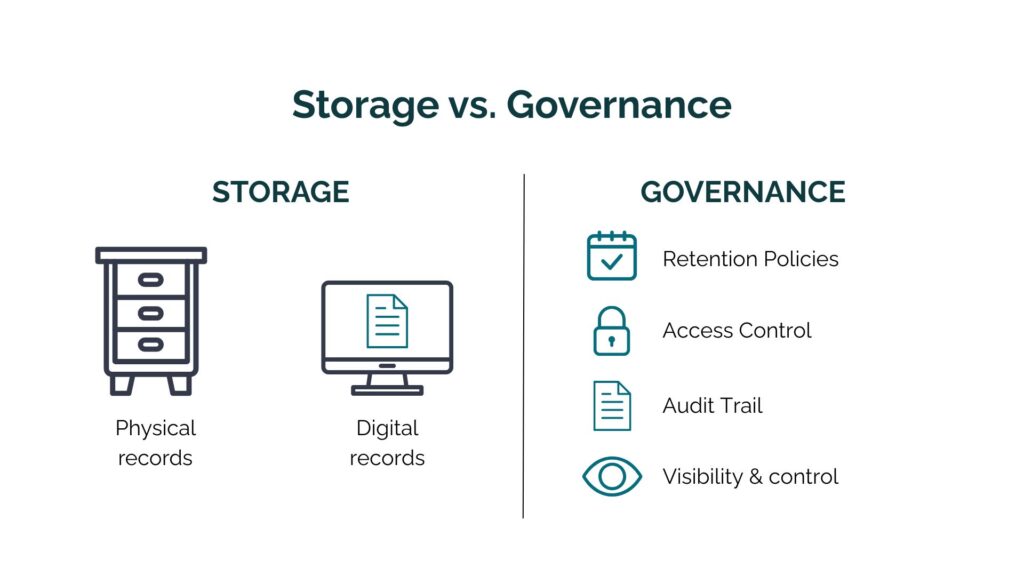
The Challenge: Achieving True Visibility and Control Across Hybrid Records
The real challenge for organisations today isn’t just storing records; it’s ensuring visibility, access, control, and governance in the same way across both physical and digital inventories.
Too often, these capabilities stop at the digital layer. If your retention policies, access controls, and audit trails only apply to electronic files, you’re leaving a significant compliance gap.
Without a unified approach, organisations risk:
- Blind spots in governance: Physical records often fall outside automated compliance frameworks.
- Fragmented access: Different systems for paper and digital files make retrieval slow and inconsistent.
- Inconsistent security: Sensitive information may be well protected digitally but exposed in physical form.
- Audit complexity: Demonstrating compliance across formats becomes time consuming and costly.
The Risks of Fragmented Records Management
When organisations rely on onsite storage solutions for physical records, they often face operational and compliance challenges that go beyond simple storage. These challenges include:
- Space and cost pressures: Maintaining physical archives consumes valuable real estate and drives up storage costs.
- Limited visibility: Tracking and retrieving files can be slow, error-prone, and dependent on manual processes.
- Compliance risk: Manual handling makes it harder to enforce retention and destruction policies consistently.
These issues are compounded by the fact that many digital platforms focus solely on storing electronic files without addressing the governance of physical inventory. This disconnect creates a fragmented approach that leads to:
- Data sprawl: Multiple systems with no single source of truth, making it difficult to manage records holistically.
- Inconsistent security posture: Different rules for paper and digital records increase the risk of breaches or non-compliance.
- Audit complexity: Proving compliance across formats becomes time-consuming and costly, especially during regulatory audits.
The result? Organisations face higher risk exposure, inefficiencies, and unnecessary costs; all of which can be avoided with a unified governance strategy.
Why Hybrid Unified Governance Matters
If your organisation operates in highly regulated and audited sectors such as healthcare, life sciences, financial services, or legal; the stakes are even higher.
Patient records, case files, and compliance documentation often span both physical and digital formats. Regulators expect defensible, auditable governance regardless of format, and failure to deliver can result in fines, reputational damage, and operational disruption.
A hybrid governance model addresses these challenges by ensuring:
- Retention policies applied consistently across physical and digital records, reducing compliance gaps.
- Access control at file level, not just at system or folder level, to protect sensitive information.
- Audit trails available in a few clicks, supporting legal defensibility and regulatory audits.
- Format-agnostic compliance, reducing risk and improving operational efficiency across the entire records lifecycle.
This approach ensures that governance is not an afterthought but a core component of your information management strategy.
Best Practices for Hybrid Records Governance
To succeed in managing hybrid records effectively, organisations should:
- Adopt a single governance framework that applies equally to physical and digital records.
- Identify the official record to avoid duplication and confusion across systems.
- Automate retention and audit processes wherever possible to reduce human error.
- Regularly review and purge non-records to minimise risk and free up storage.
- Stay aligned with regulatory requirements, especially in healthcare and other highly audited industries.
By following these best practices, organisations can move from fragmented, reactive records management to a proactive, compliance-first strategy.
DSM’s Approach: Unified Governance for Hybrid Records
At DSM, we believe the future of records management is hybrid and governed.
Our solutions are designed to eliminate silos and deliver a single, governed ecosystem for all records—physical, digitised, and digital. Key capabilities include:
- Centralised visibility of all records, regardless of format, for complete control and transparency.
- Automated retention and disposition workflows, reducing manual effort and compliance risk.
- Role-based security and encryption to safeguard sensitive data across all formats.
- Audit-ready reporting for ISO 27001, GDPR, and sector-specific compliance requirements.
- Scan-on-demand services to digitise physical files without losing governance or chain of custody.
This unified approach ensures compliance and operational efficiency across the entire information lifecycle.
Here to Help!
Hybrid records aren’t going away any time soon. Organisations that unify governance across physical and digital formats will reduce risk, improve compliance posture and save space.
At DSM, we can help you achieve this with our format-agnostic, compliance-first approach that turns your records into governed, accessible, and auditable assets.
Ready to take control of your hybrid records? Give us a call at 061-332206 to talk to one of our team of experts.
Contact us to learn how we can help.

